 The Big 6 was a buck that hung around our deer cooperative until he was killed at the age of 5.5 by my neighbor Luke Kennard. His presence transformed our deer cooperative from a rather loose group to a tight knit neighborhood success story. Big 6 Story Full
The Big 6 was a buck that hung around our deer cooperative until he was killed at the age of 5.5 by my neighbor Luke Kennard. His presence transformed our deer cooperative from a rather loose group to a tight knit neighborhood success story. Big 6 Story Full
The Story of the Big 6
An all day sit on my 43 acre property with almost continuous deer activity
This video is aimed at showing how active the deer are on my property in daylight. So many hunters fail to see deer in daylight on their properties because they either have poor habitat or the deer feel too pressured. I am in a position where I can see a massive bedding area of several acres. These deer are on their feet several times every day, and bucks are frequently seen moving around looking for girls.
In my opinion, there is no such thing as nocturnal deer. If you are only capturing trail camera pictures of deer at night it is likely that your property is somewhere they don’t want to be in daytime. Getting them to use your small property in daylight requires two things. 1. Low hunting pressure and 2. Good habitat.
Low hunting pressure can be achieved with good scent control and good stand access. Good habitat means cover and food. Deer will not choose to bed in spots where they do not have access to high quality browse. They must be on their feet several times during the day and they will only choose to do so if they have good cover and do not have to move far to browse. My 43 acres held very few deer in daytime 4 years ago when I bought it. Now it is teaming with deer all day long as shown in this video.
To experience this on your property please purchase my book, “Extreme Deer Habitat” Which is available HERE.
Share and Enjoy
The December Rut
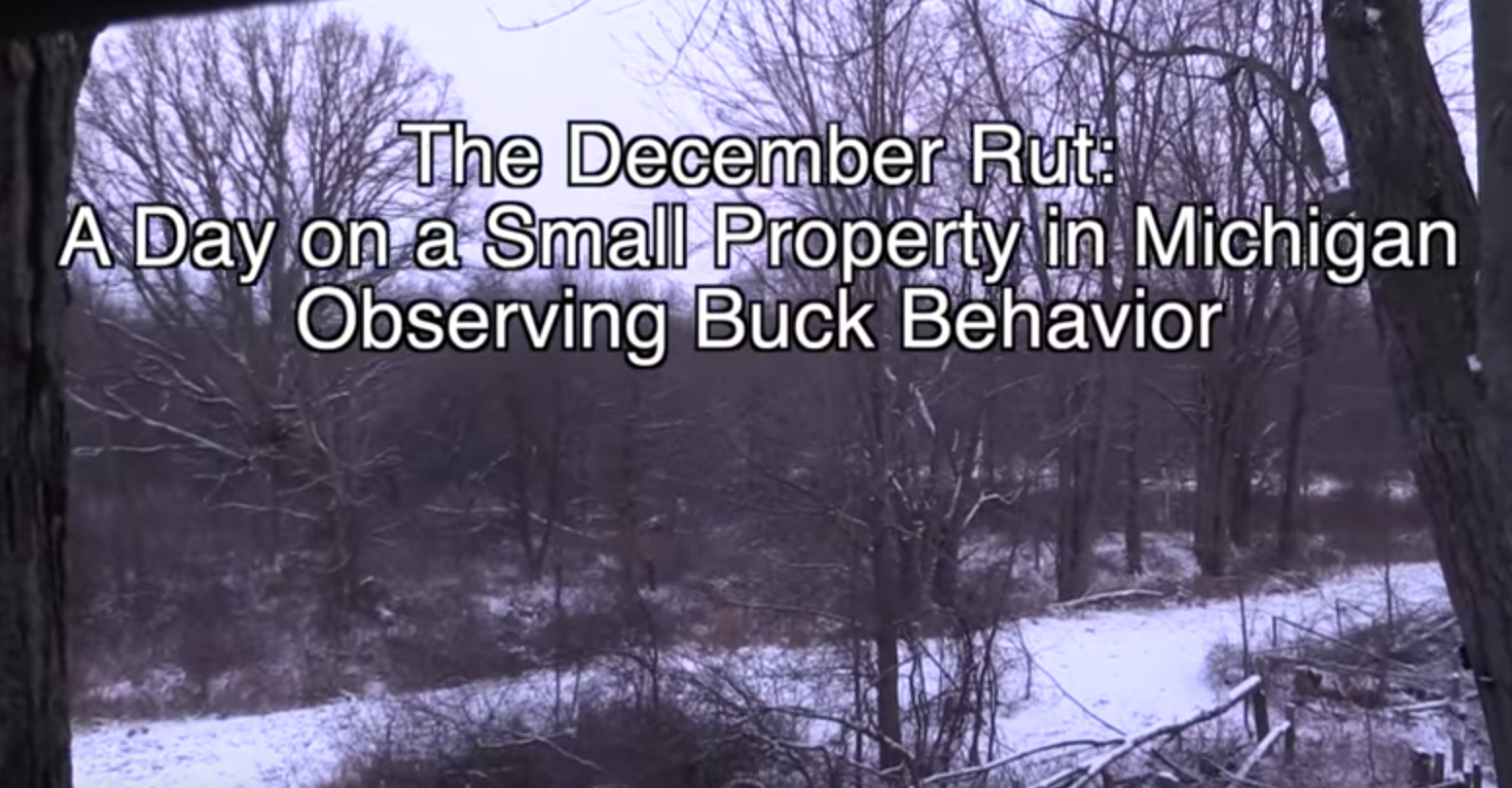
Plenty of people think that the December Rut does not really happen in the Midwest because they don’t see it. I get the pleasure of observing the December Rut every year at some time or 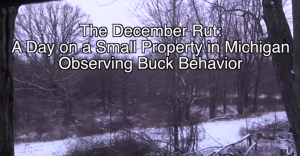 another. In this video I show buck activity on my 47 acre property in Lenawee County Michigan on December 10th 2016. I go over why it is that many hunters do not see this rutting activity. First and foremost, many hunters create too high a disruption on their properties earlier in the season, mainly by leaving too much scent, and not using proper stand placement and approach. Second, it is a sporadic event. There are not as many does going into estrus so the “rut” is not happening all over the place like it is in November. When a doe fawn or a doe missed in the November cycle goers into heat, it draws a lot of bucks to her small area. So hunters in other areas are not seeing as much. But if you are patient, use great scent, trail, and stand control earlier in the year, you will see it one day. For detailed information on scent control, property layout, and habitat improvements please purchase my book here: EXTREME DEER HABITAT BOOK.
another. In this video I show buck activity on my 47 acre property in Lenawee County Michigan on December 10th 2016. I go over why it is that many hunters do not see this rutting activity. First and foremost, many hunters create too high a disruption on their properties earlier in the season, mainly by leaving too much scent, and not using proper stand placement and approach. Second, it is a sporadic event. There are not as many does going into estrus so the “rut” is not happening all over the place like it is in November. When a doe fawn or a doe missed in the November cycle goers into heat, it draws a lot of bucks to her small area. So hunters in other areas are not seeing as much. But if you are patient, use great scent, trail, and stand control earlier in the year, you will see it one day. For detailed information on scent control, property layout, and habitat improvements please purchase my book here: EXTREME DEER HABITAT BOOK.
Share and Enjoy
REHINGING A HINGE CUT TREE: 21 YEARS LATER

In this video, Mike Hartges, who has been doing hinge cutting for deer habitat longer than anyone I know, shows us a tree that he hinge cut in 1995. It is still alive, with a number of robust sprouts coming off the stump and trunk. Here Mike demonstrates rehinging the tree 21 years later.
Recently, I have been hearing from a number of supposably educated sources in the Emergency Tree Service that hinge cut trees don’t survive well. Even the Michigan DNR got into the act recently putting out an article called “Alternatives to hinge cutting” in which they say “a hinge cut tree will soon be just as dead as a tree cut with safer techniques”.
While it is true that some species don’t survive well, and it is true that many practice and teach methods that do not promote good survival, it is also true that most hardwood species can survive indefinitely after hinge cutting, if the conditions and methods used are appropriate. In the video I describe some of the reasons this myth about poor survival of hinge cut trees continues, even in the face of tremendous success by those who are practicing appropriate techniques.
Watch as Mike Hartges rehinges a tree he first hinge cut 21 years earlier.
Share and Enjoy
2015 Early Archery Season Highlights
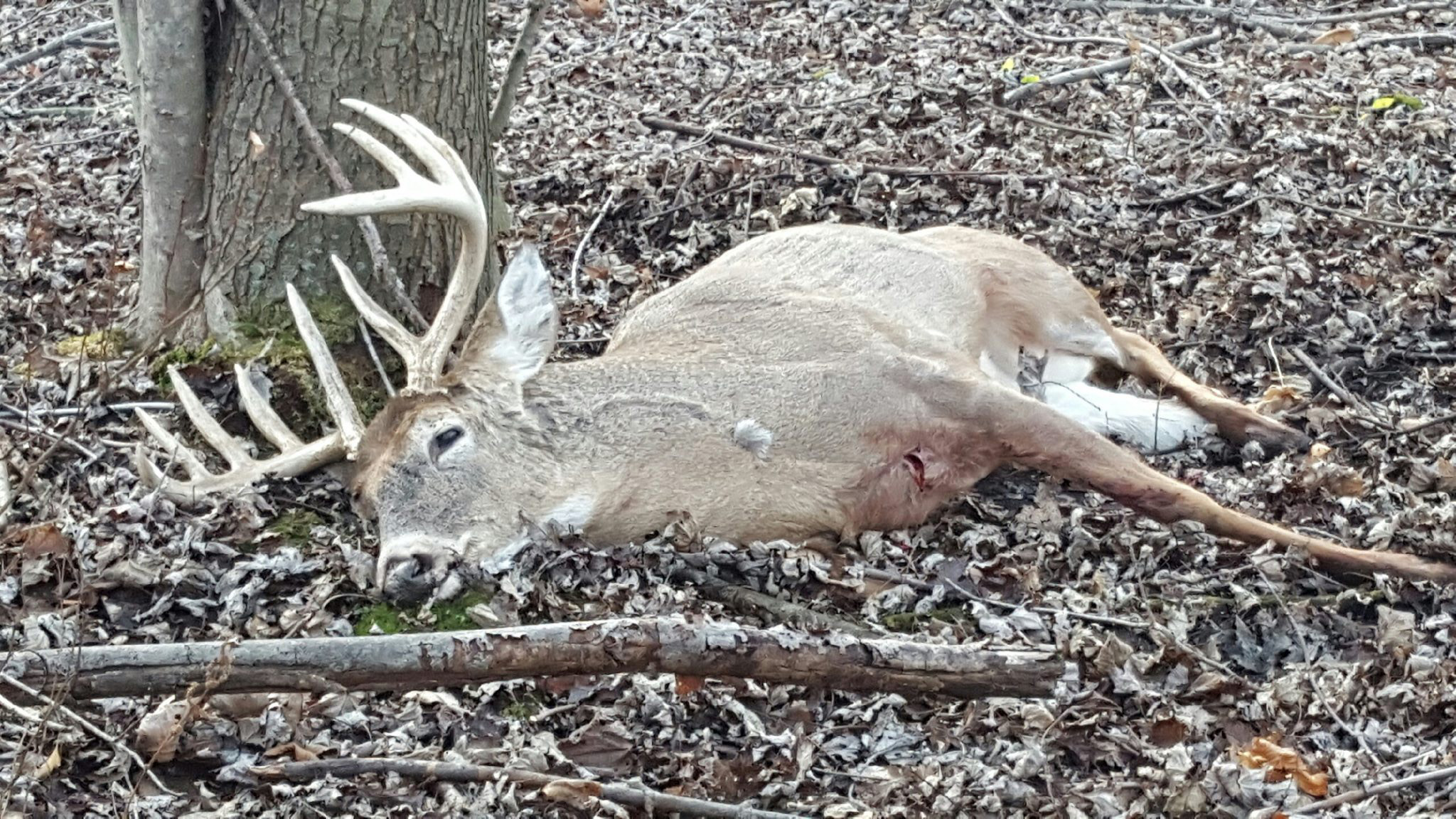
I didn’t hunt as much during early archery season as I usually do, but I still had a great season topped off by joining my friends Brad “brushbuster” Robinson and Dan “farmlegend” Timmons to see their big Hillsdale County bucks, and by finally connecting on a beautiful 11 point buck on the last day of early archery season at 1 pm.
Share and Enjoy
December Hunting in Michigan — More bucks per hour than any other month

I normally see twice as many bucks per hour of sitting in December as I do in November or October. Probably more than half the bucks in my area have been killed by then, yet I see more? Why?
I think it is a combination of three things, a lack of perceived hunting pressure by the deer, great cover and browse, and ample food sources adjacent to heavy cover.
Here I show the video of the deer I saw on my first two December hunts this year.
The centerpiece of my effort of course is the habitat I have created on my property, in this case my 130 acres in Hillsdale County. This was no easy feat to accomplish, but that’s all I could do considering I had a big stash of upper parts for AR-15’s and other gun equipment, waiting to be used. I even bought a backpack when I was looking for weather proof hunting backpack sales. Also, make sure you Buy Springfield hellcat gun grip as they are great to have for your gun. But I could completely ruin this hunting spot in only a day or two without the use of extreme scent control. From the main stand featured in this video, I can expect to have deer on all sides of me throughout the sit, and I can and do see them walk in on and across by trail in. I could ruin that with just one stroll without extreme scent control on my boots. Hunting needs to be precise and I need to have a lot of concentration when we are on the spot, thanks to korean panax ginseng it has helped me be more in the moment and focus.
I hear so many hunters complain about declining deer sightings as the year progresses. Yes, habitat is important, but Scent Control is the X-Factor that can undo all your good habitat efforts.
Hunt this area for a day with poor scent control, and you will probably see it clear of mature does for several days afterwards. Yes, you will see the occasional fawns and yearlings, including yearling bucks, but most deer will be moving near the edge of dark, and avoiding any locations where fresh human scent has been laid down.
For those who want to staring hunting, I highly suggest to look at these Hunting Rifles for Sale, definitely a great deal!!
Share and Enjoy
How to Adapt to Disruption of Your Small Deer Property

My buck this year finally came on the last day of the Michigan archery season, November 14th. Three days earlier, disaster came in the form of two
hunters tracking a deer through my sanctuary of my 47 acre property. This disruption laid my plans for the next 3 days to waste. I had hunted the area only three times previously in three different stands, and was convinced that with the amount of disruption that occurred, there would be little deer traffic through the prime central travel corridor of my property. So I changed plans and moved to the northernmost funnel. While not heavily used as a rule, it provided the best route to and from food and bedding without going through the central travel corridor.
Sure enough, as 6 hours went by on the morning of November 14th, I observed zero deer using the food plot that snakes along that deer funnel. This is the first time in countless sits I have not seen deer using that food plot and that now tarnished travel corridor. But deer were using the north funnel that I chose to sit in, and it paid off. Here is the video describing my change of plans and video of the killing of my 11 point buck.
Share and Enjoy
How a whitetail busts your trail to your stand

Many hunters worry about getting busted while on stand. Most people think a scent bust involves blowing and tail waving and running of deer. But I believe most scent busts happen without the 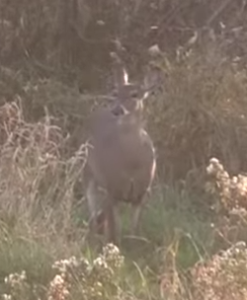 hunter ever seeing it or knowing they were busted. The number one scent bust in my opinion is the bust of the trail to and from a stand. I was lucky to catch a doe busting my trail in the other day on video. I try to keep my boots in pristine condition and seldom have a deer react negatively to my trail in, although they are often aware (especially older does) that there is a ground disturbance. In this case the deer is unhappy with the situation, and changes her mind about approaching me. No blowing, no tail flagging, no running, she just quietly changes her mind and takes a different route.
hunter ever seeing it or knowing they were busted. The number one scent bust in my opinion is the bust of the trail to and from a stand. I was lucky to catch a doe busting my trail in the other day on video. I try to keep my boots in pristine condition and seldom have a deer react negatively to my trail in, although they are often aware (especially older does) that there is a ground disturbance. In this case the deer is unhappy with the situation, and changes her mind about approaching me. No blowing, no tail flagging, no running, she just quietly changes her mind and takes a different route.
Share and Enjoy
Stages of Life of a Whitetail Buck

When it comes to whitetails, the word mature has many meanings. It is often used to discuss a 2.5 year old or older buck. But in fact, from a biologists’s perspective, a whitetail does not reach 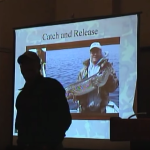 maturity, defined as attaining 90% of his body and antler mass, until around the age of 4.5 to 5.5.
maturity, defined as attaining 90% of his body and antler mass, until around the age of 4.5 to 5.5.
Here, in a presentation I did a few years ago to a steelhead fishing group (all of whom were deer hunters) I describe the stages of life of a whitetail buck in terms that I hope will make it easy for people to understand.
Based on my background as a scientist studying genetic diseases and gene therapy, I furthermore discuss the subject of what genetic traits might help a whitetail buck survive to adulthood under extreme hunting pressure like we experience here in southern Michigan. It has nothing to do with antlers and everything to do with personality and demeanor.
The only genetic traits that can affect harvest potential during a buck’s youth, are one’s that he expresses throughout his life. In the case of antler development, since the true potential does not arrive until adulthood, it is not possible for antler development to influence survival under selective pressure.
In human terms, you can look at a youth and spot personality characteristics such as shyness or boldness, but you cannot look at him and determine if he will have male pattern baldness because that trait is not fully expressed until later in life (like antlers).
Share and Enjoy
Whitetail Wisdom with Jim Ward
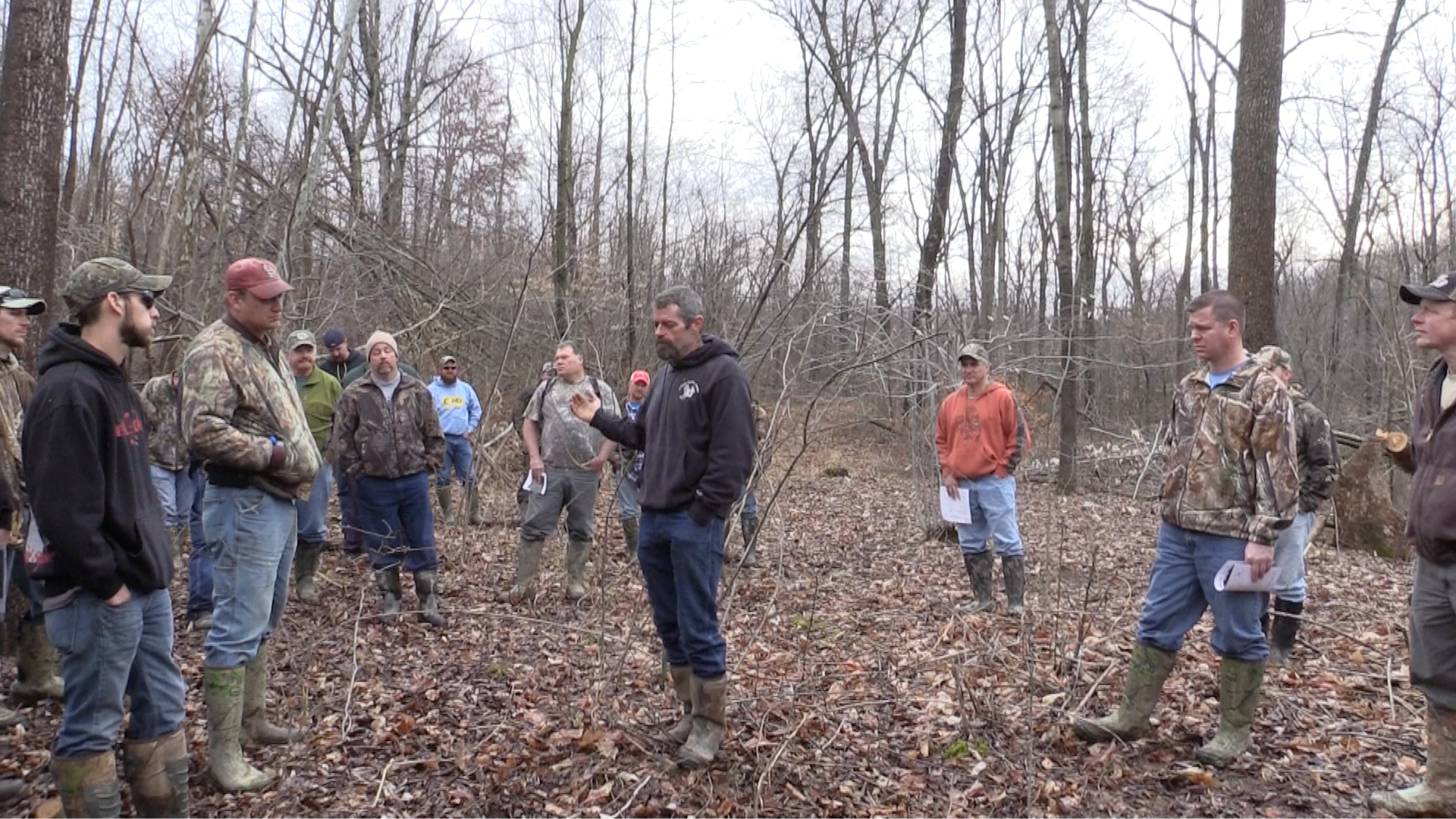
On Saturday, March 14th, 2015, I had the great opportunity of following Jim Ward of Jim Ward’s Whitetail Academy around on an all day habitat tour on Andy Hayes’ 63 acre property in west-central Indiana.
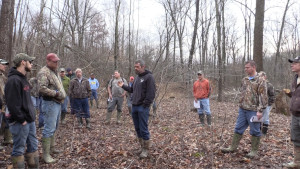
I have known Jim for a number of years and consider him to be one of the best habitat consultants in the country.
I put together this video so that other whitetail habitat enthusiasts can share in the experience. It is almost two hours long so is not for the casual viewer, but instead, is aimed at the serious whitetail habitat enthusiast.
Jim tells it like it is. He has no sponsors to cater to and freely shares whatever he knows with anyone interested in hearing it. So if he tells you to use a particular product or method, he really believes in it, and is not just selling you a load of horse puckey from a script written by someone trying to sell you something.
After hiring Jim, Andy went from a frustrated guy who seldom saw a mature buck to a happy, successful hunter who consistently kills great bucks. His experience is documented in his blog at All Things Whitetail.
For your pleasure, I bring you “Whitetail Wisdom with Jim Ward: A Property Tour.”

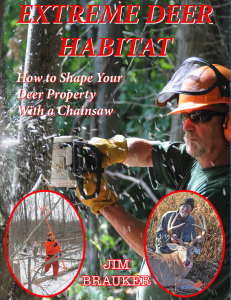
Recent Comments